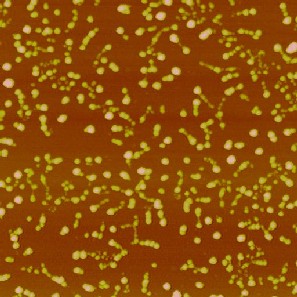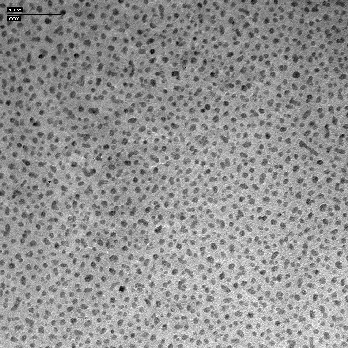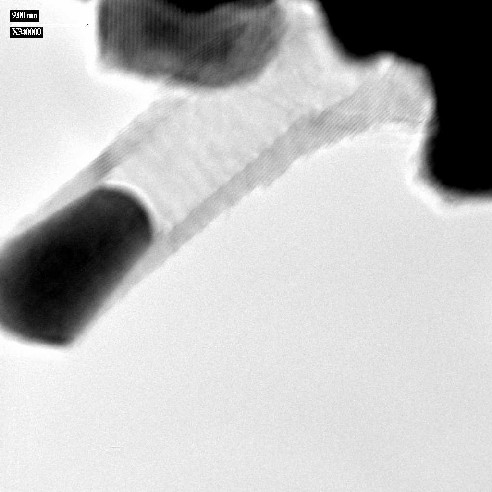
Depiction of two Au nanostructures, each derived from about 2000 atoms. Contact leads to reorientation, followed by surface atom diffusion (bottom section) and coalescence. Energy release produces phonons that move the nanostructures on the rare gas solid.

TEM image of Ge nanostructures where coalescence leads to branched structures rather than compact structures because of the relatively large activation energy for Ge diffusion on Ge (see cartoon above for coalescence). The nanostructures were produced at 20 K, and they formed extended features during Xe desorption at ~60 K.

Cobalt nanostructures formed by buffer-layer-assisted growth. The size and separation can be controlled, and a 3D array of magnetic particles can be developed.

TEM image of crystalline Fe inside a multiwalled carbon nanotube that has extended from the substrate. Discontinuities in thickness of the nanotube are clearly evident. We use our growth technique to produce the Fe particles that then catalyze nanotube formation.